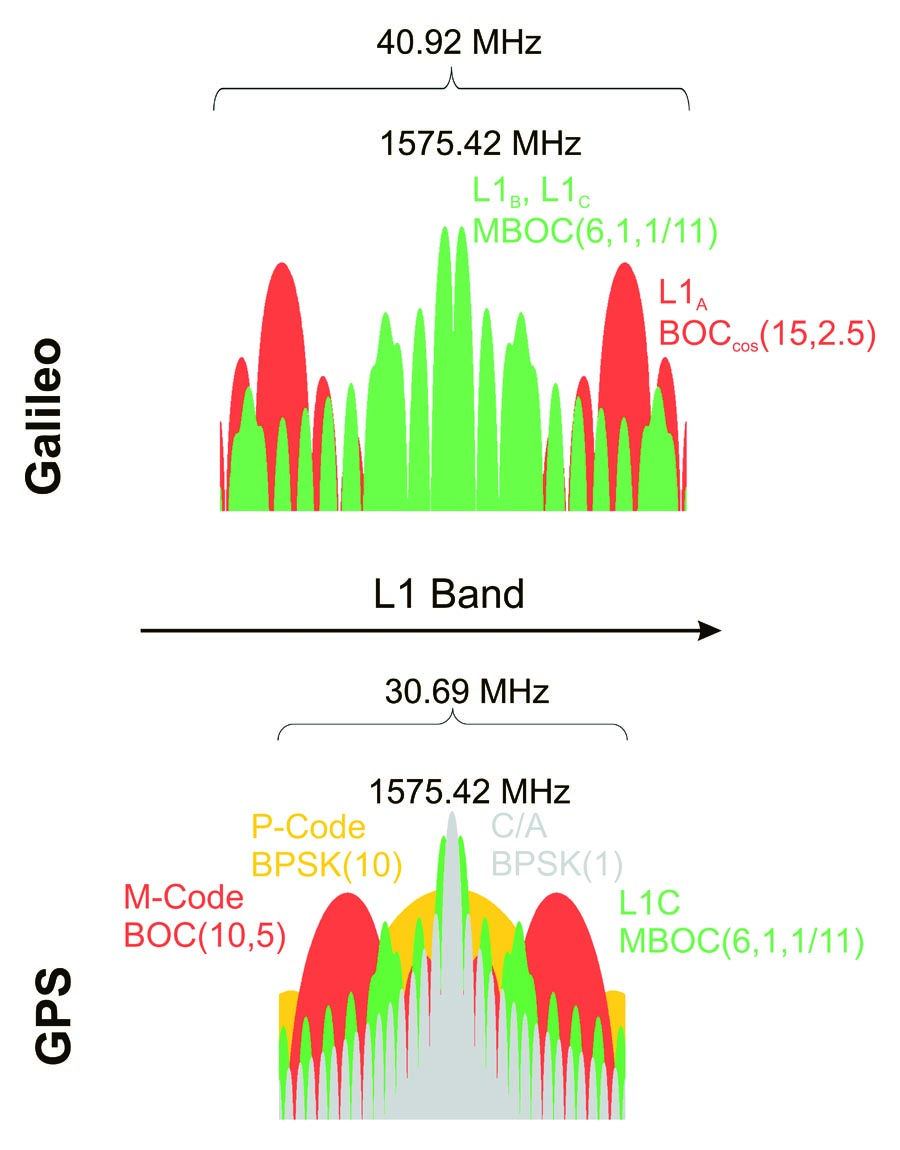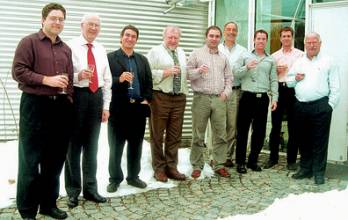The Global Positioning System is undergoing continual modernization, providing ongoing improvements for users worldwide. Although various enhancements in system features have been under development since the mid-1990s, modernization first benefited civil users when Selective Availability — a security-motivated technique for “dithering” the open L1 signal to reduce positioning accuracy — was set to zero in May 2000.
The Global Positioning System is undergoing continual modernization, providing ongoing improvements for users worldwide. Although various enhancements in system features have been under development since the mid-1990s, modernization first benefited civil users when Selective Availability — a security-motivated technique for “dithering” the open L1 signal to reduce positioning accuracy — was set to zero in May 2000.
Subsequently, other improvements in accuracy have been obtained through enhancements to the capabilities and operation of the control and space segments, still based on the original set of GPS signals.
The launch of the IIR-14(M) (modernized replenishment satellite) in 2005 began a new era with transmission of the L2 civil (L2C) signal, along with the modernized military M-code signal. A third civil signal, called L5, will be transmitted from Block IIF satellites.
All the while, improvements in monitoring, satellite technology (for example, the on-board atomic clocks) and operations yield continuing increases in accuracy. The United States plans to continue providing these capabilities free of user fees. It will continue to complement this pricing policy by providing free and open signal descriptions and other technical information needed for development of receivers and services using civil signals.
In the meantime, development of the next generation of satellites, called GPS III, and a modernized control segment (OCX) continues, which will lead to greatly enhanced capabilities beginning early in the next decade. An integral part of the GPS III capabilities being developed is a new civil signal, called L1C, which will be transmitted on the L1 carrier frequency in addition to current signals.
Approximately one year ago, the U.S. Air Force released the initial draft of Interface Specification IS-GPS-800, describing L1C. Novel characteristics of the optimized L1C signal design provide advanced capabilities while offering to receiver designers considerable flexibility in how to use these capabilities.
The development of L1C represents a new stage in international GNSS: not only is the signal being designed for transmission from GPS satellites, its design also seeks to maximize interoperability with Galileo’s Open Service signal. Further, Japan’s Quazi-Zenith Satellite System (QZSS) will transmit a signal with virtually the same design as L1C.
L1C has been designed to take advantage of many unique opportunities. Its center frequency of 1575.42 MHz is the pre-eminent GNSS frequency for a variety of reasons, including the extensive existing use of GPS C/A code, the lower ionospheric error at L1 band relative to lower frequencies, spectrum protection of the L1 band, and the use of this same center frequency by GPS, Galileo, QZSS, and satellite-based augmentation system (SBAS) signals for open access service and safety-of-life applications.
Other unique opportunities that the L1C design leverages include advances in signal design knowledge, improvements in receiver processing techniques, developments in circuit technologies, and enhancements in supporting services such as communications. The L1C design has been optimized to provide superior performance, while providing compatibility and interoperability with other signals in the L1 band.
L1C provides a number of advanced features, including: 75 percent of power in a pilot component for enhanced signal tracking, advanced Weil-based spreading codes, an overlay code on the pilot that provides data message synchronization, support for improved reading of clock and ephemeris by combining message symbols across messages, advanced forward error control coding, and data symbol interleaving to combat fading.
The resulting design offers receiver designers the opportunity to obtain unmatched performance in many ways.This article will give an overview of the L1C signal design, highlighting the features that will benefit receiver designers and, ultimately, end users. The following section provides background on L1C and its design process, from its beginnings in 2003.
Subsequent sections then provide an overview of the signal structure, details of the signal’s spreading codes and overlay codes, spreading modulation, data message structure, and encoding and decoding of message information.
Summary of Benefits
Although more complete details are provided in IS-GPS-800, we will outline the most significant characteristics here.
L1C has been designed with unique, innovative, and powerful new features to enhance its robustness for all users, especially in difficult environments.
The signal structure alone, with the spreading code and the overlay code, provides exact GPS time, modulo 18 seconds. Alignment to the spreading code provides bit synchronization and alignment to the overlay code provide frame synchronization, making these receiver functions simple and robust.
For high-precision (e.g., survey) use, the pilot carrier removes the half cycle phase ambiguity, and the larger RMS bandwidth of the new spreading modulation has the potential to improve tracking performance, especially multipath mitigation. With the combination of improved carrier tracking of the pilot component, segmentation of clock and ephemeris in the data message, and FEC design, an autonomous navigator can demodulate the satellite clock and ephemeris whenever the signal can be tracked.
The improved cross-correlation of the new codes will also improve the performance of high-sensitivity receivers. Performance will also improve as a result of the new message format that allows code combining across satellites for the TOI and code combining of the near constant sub-frame 2 ephemeris data across multiple frames. International collaboration and outreach have assisted in producing a truly international signal with capabilities that will serve users for decades to come.
For the full article, including figures, graphs, and additional resources, download the PDF above.






